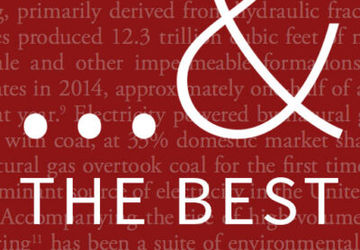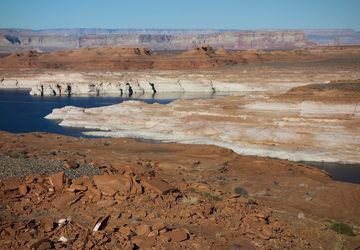Nora Hennessy, PhD Student, Energy Resources Engineering, '22
How cost-effective are citywide energy storage programs? As an intern at the City of Palo Alto Utilities last summer, Nora Hennessy was tasked with building a model to answer that question. California mandates that municipal utilities like Palo Alto’s consider energy storage targets every three years.
“The thought is that with these targets publicly-owned utilities could help encourage behind-the-meter battery usage. This in turn can help decarbonize the grid, make better use of excess renewable energy, and enhance resiliency,” explains Lena Perkins, senior resource planner and manager of Palo Alto’s Program for Emerging Technologies, and Hennessy’s internship mentor.
Hennessy’s model considers local utility rates, transmission and distribution infrastructure, hourly wholesale electricity prices, hourly emissions, and other factors to determine when it makes financial sense for a residential or commercial customer to charge or use their battery. The model then analyzes what those customer choices mean for the utility and for greenhouse gas emissions.
Hennessy determined that having customers buy more batteries would not be cost effective. This didn’t surprise Hennessy or Palo Alto Utilities. After all, batteries are expensive.
More intriguing was the relationship between energy storage and carbon emissions. Battery use among commercial customers can actually increase greenhouse gas emissions, Hennessy found.
This is because commercial customers are charged based on their peak energy usage, which incentives them to use their batteries during the day when the grid is cleanest.
“For commercial customers, it makes financial sense to use their batteries during the day to help offset the cost of their energy demand, then charge the batteries overnight,” Hennessy explains. “The problem is that our electric grid is cleanest during the day when we have solar power. The timing doesn’t align in terms of their energy needs and emissions from our energy sources.”
Hennessy’s findings validated a recent statewide study commissioned by the California Public Utilities Commission. The study found that projects under California’s Self-Generation Incentive Program increased emissions. In response, California has modified the program to require that all eligible projects reduce greenhouse gas emissions.
Hennessy was able to accomplish in two months what the CPUC consultant did in two years, says Perkins. “She was able to model this from the ground up and show that the CPUC results were true for our customers as well,” Perkins explains.
Internship informs research
During her summer at Palo Alto as part of the Stanford Energy Internships in California and the West program, Hennessy got a chance to experience work in a public service and public policy environment. The experience gave her insight into what questions are being asked by cities, how policy is actually implemented, and how technology is rolled out, Hennessy says. “It will help me frame my thinking and know which questions to ask as a researcher.”
Her mentor, Perkins, agrees: “It was the perfect counterpoint to the theoretical experience in a PhD program.”
This real-world perspective is evident in Hennessy’s current research at Stanford on environmental justice and the energy transition.
“When I started my master’s at Stanford, I was focused on really technical questions of decarbonization,” she says. “Now I am looking at how people are affected by the transition to renewable energy and how we can use that transition to create a more just energy system.”
For Palo Alto, the impact of Hennessy’s work will go beyond meeting their regulatory requirements to assess energy storage targets. They now have a model they can use to evaluate other potential microgrid and storage programs.
“Rather than encouraging customers to buy batteries and use them in a certain way, we’re looking at programs that would allow customers to use their existing flexible resources in a way that follows carbon and cost signals to lower costs and emissions for everyone,” Perkins explains.
“We can extrapolate Nora’s model to look at the cost-benefit for these options.”
In addition, Hennessy’s internship honors the memory of a late colleague at both Stanford and Palo Alto. She was the inaugural Karl Knapp Energy Fellow in City Government. Karl Knapp is remembered as a warm, enthusiastic and passionate presence at Palo Alto Utilities, where he was a senior resource planner, and at Stanford, where he co-taught the Understanding Energy course.
“This internship program helps to foster connections between Palo Alto and Stanford, something Karl did really well when he was alive,” says Perkins. “He would be thrilled to know that we are not letting this incredible resource—Stanford students—go to waste. Nora did so much good work. She was an absolute rockstar.”
Stanford Energy Internships in California and the West is a partnership of the Precourt Institute for Energy, Bill Lane Center for the American West, Haas Center for Public Service and Stanford in Government. The program offers Stanford students paid internships with energy agencies in California, Colorado, Utah and Hawaii.



